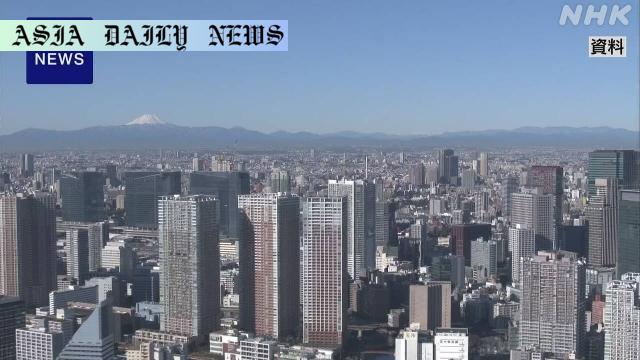Tokyo Condo Prices: Average condo price in greater Tokyo hit record highs in the first half of the year due to rising costs.
Record-setting average price of condos in Tokyo area, up 16.7% year-over-year.
Rising land and construction costs contributed to the price increases.
Foreign and domestic wealth buyers drive demand, fueling the uptrend.
Chiba exception: Average condo prices dropped 1.6% year-over-year despite regional gains.

Record Surge in Condo Prices: What is Driving the Boom?
The average prices of new condominiums in the greater Tokyo area hit a record high during the first six months of the year, an upward trend primarily fueled by rising land and construction costs. As reported by the Real Estate Economic Institute, the average cost of newly developed condos in Tokyo and the surrounding Kanagawa, Saitama, and Chiba prefectures stood at 89.58 million yen — over $600,000 USD. This represents a significant 16.7% rise compared to the same period in the previous year.
The price surge has exceeded any first-half-year levels in recorded history for the region, even surpassing the prior record set in 2023. Remarkably, current price levels represent a 46% increase compared to 2019, before the COVID-19 pandemic reshaped global economies and real estate markets. Tokyo’s core 23 wards observed a substantial climb of 20.4%, echoing a pattern seen across Japan’s high-demand urban areas.
Key Drivers: Rising Costs Amid Increased Demand
A pivotal factor behind the price growth is the escalating cost of land purchases and construction development. With higher input expenses leading to proportionately pricier end products, the effects of inflationary pressure resonate deeply in the Greater Tokyo Area real estate market. Adding to this is the growing demand among affluent buyers from Japan and abroad, particularly in urban centers like Tokyo’s 23 wards where premium housing maintains its appeal. Wealthy individuals view such investments as both status symbols and solid financial bets, thereby pushing demand over supply further.
Interestingly, Saitama recorded the steepest increase among surrounding suburbs, with a 26.9% year-over-year rise. On the other hand, the Chiba prefecture reported a 1.6% price dip, contrasting with broader regional trends. However, the consensus remains that the cumulative factors sustaining the price increases, from resource bottlenecks to market appetites, will likely persist.
The Post-Pandemic Real Estate Trajectory
Real estate trends in Tokyo have experienced notable shifts since the pre-pandemic era, reflecting broader regional adjustments to global health, economic, and social dynamics. Prior to COVID-19 outbreaks, Tokyo’s property market already saw robust annual growth, particularly in ultra-premium units tailored for affluent domestic and international clienteles. However, the past several years have accelerated changes, leading analysts to predict perpetually elevated valuations amid limited buildable land and heightened costs.
Moreover, experts suggest that macroeconomic pressures combined with Tokyo’s population trajectory — with a mixture of urbanization and internationalization — leave little likelihood for substantial price reductions in the near term. Within the competitive zone bound by wealth magnetism and localized amenities, the sustained trajectory, for better or worse, appears imprinted on Tokyo’s market evolution.
Commentary
Analyzing Tokyo’s Condo Market Surge
The record-breaking surge in condo prices within greater Tokyo brings underlying economic trends into focus. This remarkable 16.7% increase from last year — with even higher year-on-year jumps in certain regions — illustrates the compounded effects of inflationary pressures, global wealth migration, and specific interest in the Tokyo metropolis.
A primary driver lies in rising costs, as noted by market experts. Land scarcity coupled with inflated construction material prices creates further bottlenecks, which ultimately pass onto buyers. However, this cannot entirely explain the phenomenon, as demand remains unrelenting, particularly from affluent international buyers who now consider Tokyo a symbolic safe asset haven amidst turbulent financial markets elsewhere.
Regional Differences Tell Diverse Stories
It’s intriguing that while the broader Tokyo metropolitan area experienced remarkable increases, Chiba saw its prices fall slightly. This may reflect variances in urban versus suburban demand, as growing numbers of households — particularly younger and middle-income families — consider relocating outward for affordability alongside quality environment.
The politicization of urban housing and socioeconomic accessibility also intensifies upcoming debates about how Tokyo balances being attractive globally while serving local demographics adequately. Policymakers must be vigilant not to disproportionately favor ultra-premium urban districts at the expense of equitable housing policies.
Long-term Prospects
As trends consolidate, multi-layered involvement from authorities, builders, and economic planners becomes vital. While rising prestige associated with owning Tokyo high-end property creates allure and stability for select groups, compensating social affordability gaps decreases transitional risks long-term. In conclusion, Japan’s evolving urban heartland encapsulates the paradox of modernity clashing sustainability.


